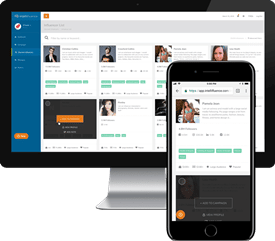Last Updated on December 9, 2020
For many companies, influencer marketing is still a relatively new concept. While social media managers want to take advantage of this promotional opportunity, they’re not entirely sure how to measure success. This benchmarking problem only compounds for companies that don’t offer low-ticket e-commerce items where sales can be tracked easily.
If you find yourself in this situation and want to know how to track your marketing success, use these six influencer marketing benchmarks to know whether or not you’re doing your job right.
Engagement Rate
Engagement rate is one of the most important metrics in social media as a whole, as well as for influencer marketing. Marketers often focus on the concept of potential reach when they promote their brand — or the number of people who could have seen a post — but this doesn’t give companies an idea of how effective the message was. Would you rather have a thousand people see your message and only generate one click, or have two hundred people see your message and generate a dozen clicks? Reach only shows how many people see something, not how many people cared.
Instead of trying to get as many eyeballs as possible, focus on getting your message in front of potential customers who care about what you have to offer.
Conversion Rate
In the world of social benchmarking, the conversion rate is similar to the engagement rate but there are noticeable differences. Engagement applies to clicks, views, comments, and shares. Customer engagement tends to be focused on actions from the social channel. Meanwhile, a conversion can be any measurable action customers take as set by the brand.
Some brands might have high-level conversions like growing followers or getting website traffic. Other brands could have explicit conversions like completed sales or intake forms. Either way, tracking conversions is a great way to quantify the success of your influencer campaign.
Average Cart for Returning Customers
While your influencer marketing campaigns can drive new customers to buy from your brand, they can also bring back returning customers and encourage them to spend more. In fact, your top 10 percent of loyal customers will spend three times more on average than the rest of your customers. Repeat customers also have a 65 percent chance of converting compared to 13 percent of new customers.
Through your marketing benchmarks, look to see how returning customer behavior changes through your influencer campaigns. If you are doing your job well, your returning customers should spend more, convert more easily, and buy from your brand more often.
Brand Recognition or Recall
One of the main benefits of influencer marketing for brands is the increased brand recall that comes with promoted messages. Brand recall refers to how long after seeing a message a customer remembers it. According to Brand Buddha, customers need to see a logo an average of 5-7 times before they can start to remember it and associate the image with a brand.
Marketers often work with many quality influencers at once, often through a platform like Intellifluence, to increase their brand reach and boost recognition. This way, influencer marketing can help improve brand recall and make customers more likely to choose a particular brand in the near future.
Top of Mind Market Share
The mental market share of your customers is similar to brand recall and tracks what percentage of customers think about your brand first when they consider your product, service, or industry. For example, what brands come to mind when you think of soda? Do you picture Coca-Cola, Pepsi, or Sprite? What about RC Cola, Dr. Thunder, or Walmart grape soda? Your brain likely jumps to the bigger brand names because they have more mental market share.
The more customers who think of your brand when they are presented with a product or industry the better, as it means your brand is the one they are more likely to buy.
Time Between Brand Message and Conversion
While influencer marketing can certainly increase sales, it can also change smaller metrics within your marketing strategy. One oft-overlooked metric is the time between exposure and purchase. Some customers buy products after a few minutes of seeing a message while others need weeks and months of brand messaging before they convert.
If a company can increase the time between seeing a brand’s message and converting, then they can increase the number of conversions each year. For example, if you increase the number of times you get a massage from monthly to alt-weekly, you will spend more with your masseuse.
Decreasing the time to conversion can also prove the effectiveness of influence marketing, as there is a direct correlation between the messaging and a purchase bump.
These are a few high-level examples of influencer benchmarking that you can use to track the success of your campaigns. You will likely have multiple marketing benchmarking metrics like click-through-rate and average view time to help you track the success of your campaigns and find ways to improve upon them in the future.

SallyBot is committed to helping users get the most out of Intellifluence. By helping brands create campaigns, providing unparalleled customer service and offering useful advice, nothing makes SallyBot happier than hearing she is liked… Really, really liked.






